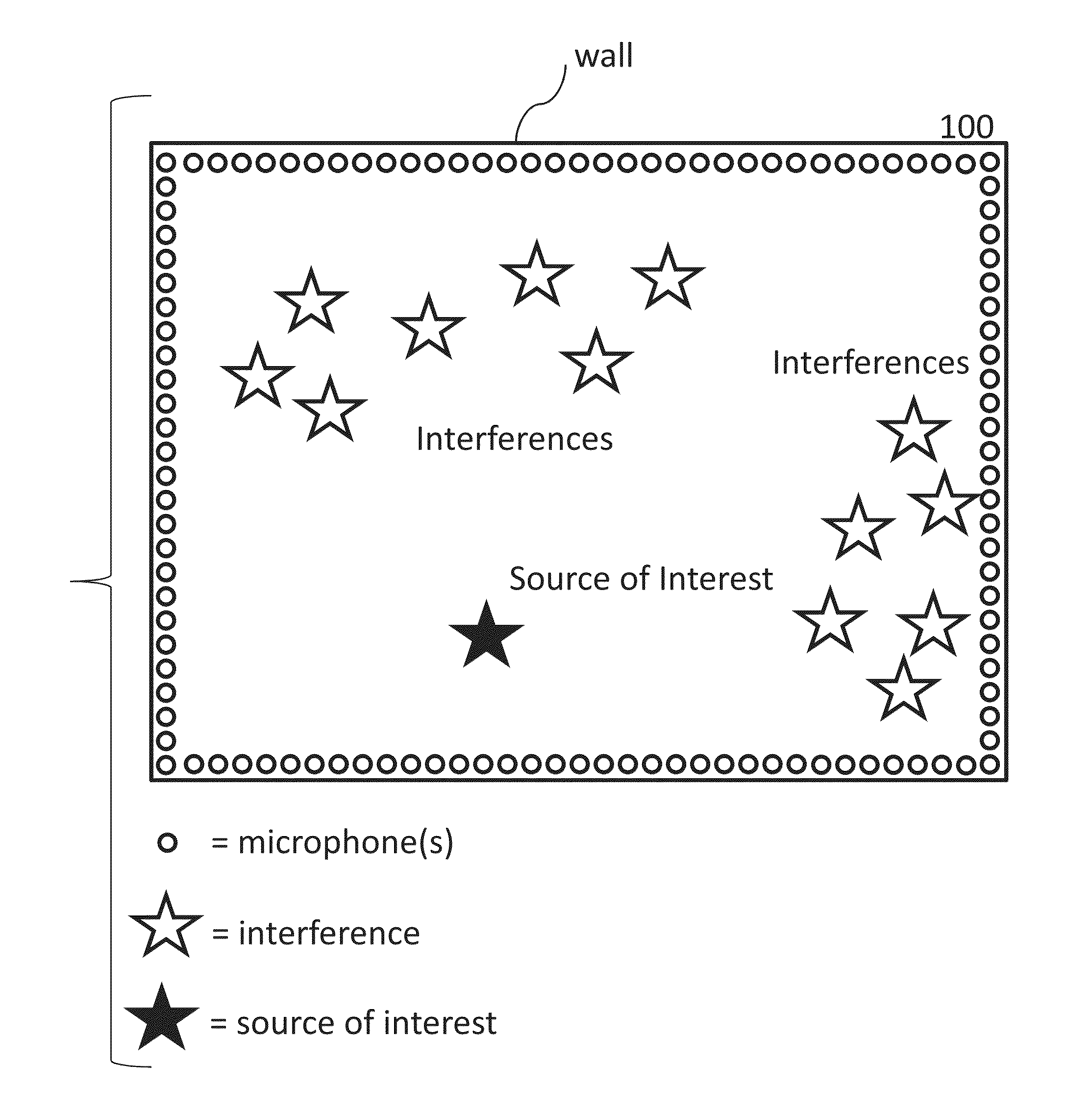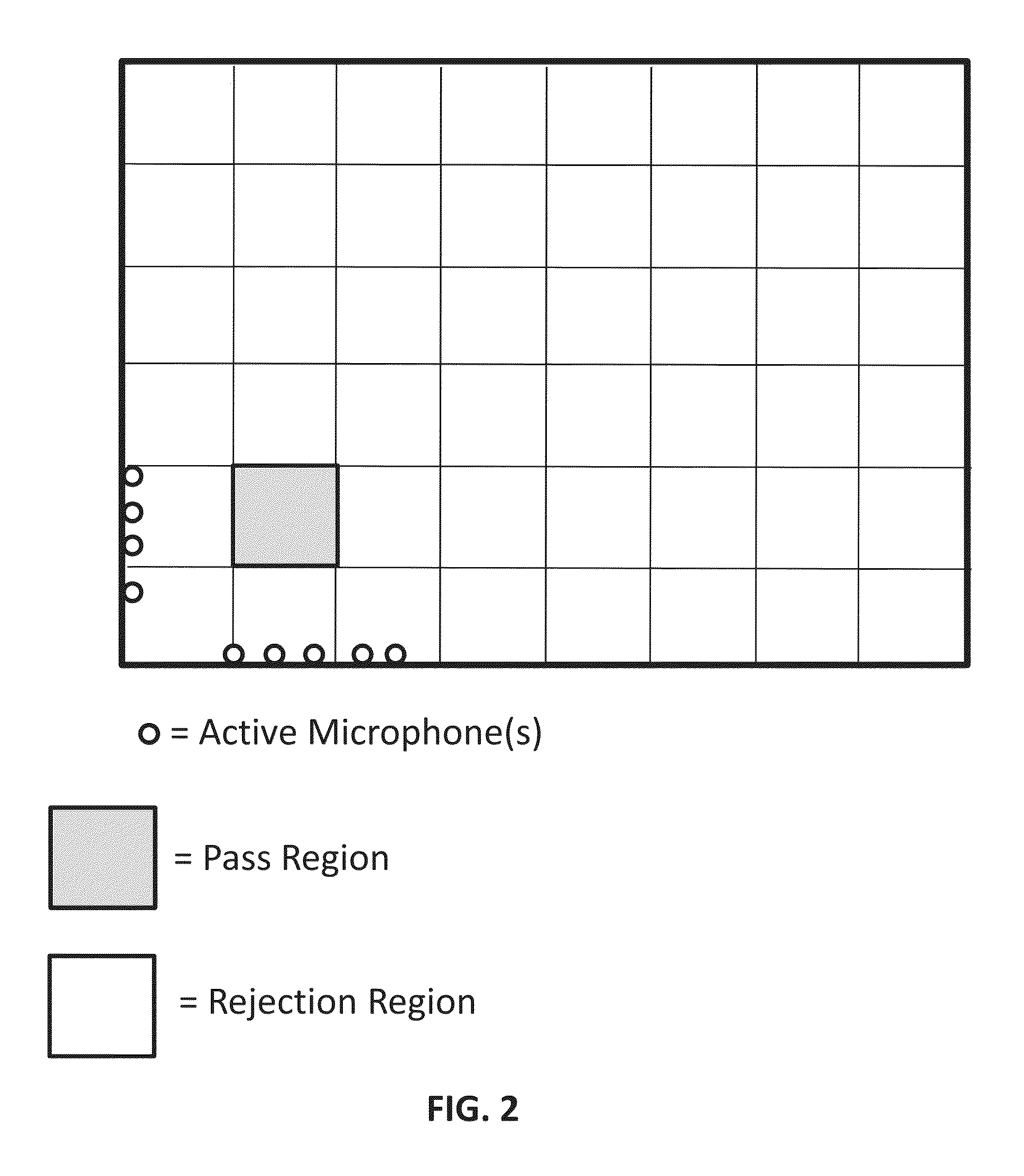Broadband sensor location selection using convex optimization in very large scale arrays
a convex optimization and array technology, applied in the direction of transducer casings/cabinets/supports, instruments, electrical transducers, etc., can solve the problem of complex acoustic scene understanding
- Summary
- Abstract
- Description
- Claims
- Application Information
AI Technical Summary
Benefits of technology
Problems solved by technology
Method used
Image
Examples
Embodiment Construction
[0039]One issue that is addressed herein in accordance with an aspect of the present invention is acoustic scene understanding by applying an ultra large array of microphones. The subject of acoustic scene understanding has been addressed in a different way in commonly owned U.S. Pat. No. 7,149,691 to Balan et al., issued on Dec. 12, 2006, which is incorporated herein by reference, wherein ultra large microphones are not applied.
[0040]In the current approach a number of high level processes are assumed:
(1) Localization of acoustic sources in the environment, representing both targets and interferences, and further source classification;
(2) Tracking of features of the sources or even separation of target sources of interest;
(3) Mapping the environment configuration such as location of walls and determination of room layout and obstacles.
[0041]A target herein is a source of interest. A target may have a specific location or certain acoustic properties that makes it of interest. An int...
PUM
 Login to View More
Login to View More Abstract
Description
Claims
Application Information
 Login to View More
Login to View More - R&D
- Intellectual Property
- Life Sciences
- Materials
- Tech Scout
- Unparalleled Data Quality
- Higher Quality Content
- 60% Fewer Hallucinations
Browse by: Latest US Patents, China's latest patents, Technical Efficacy Thesaurus, Application Domain, Technology Topic, Popular Technical Reports.
© 2025 PatSnap. All rights reserved.Legal|Privacy policy|Modern Slavery Act Transparency Statement|Sitemap|About US| Contact US: help@patsnap.com



